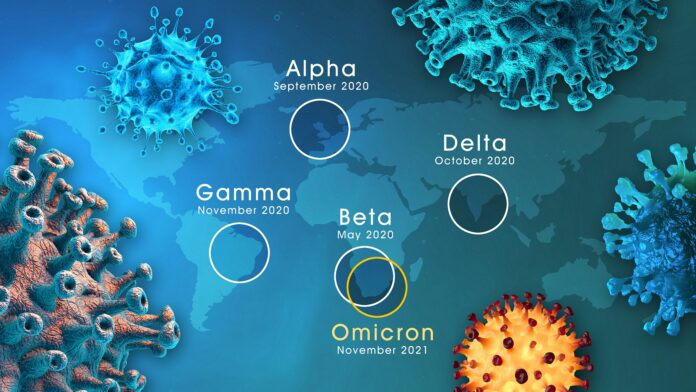Scientists say we should expect more dangerous COVID-19 variants after Omicron. As stated before, new variants pop up almost every day, and unfortunately, scientists warn us that Omicron isn’t the worst of the bunch. Omicron spreads faster despite the increase in vaccinations and boosters. And every infection provides a chance for the virus to mutate.
Medical experts don’t know what the following variant will be or how it will affect the pandemic. Therefore, they urge the vaccination and boosters while the shots still work. “The faster omicron spreads, the more opportunities there are for mutation, potentially leading to more variants,” Leonardo Martinez, an infectious disease epidemiologist at Boston University, said.
COVID-19 Variants: Omicron
The Omicron variant emerged after Thanksgiving 2021 and has run rapidly through the globe. It is at least twice as contagious as the Delta variant and four times as contagious as the original version of the virus. In addition, Omicron is more likely to reinfect individuals who previously had COVID-19 and cause “breakthrough infections” in vaccinated people. WHO reported a record of 15 million new cases the week of Jan 3-9th, which was a 55% increase from the previous week.
“It’s the longer, persistent infections that seem to be the most likely breeding grounds for new variants,” said Dr. Stuart Campbell Ray, an infectious disease expert at Johns Hopkins University. “It’s only when you have a prevalent infection that you’re going to provide the opportunity for that to occur.”
Omicron’s behavior started a trend that eventually made the virus milder, like a common cold. “People have wondered whether the virus will evolve to mildness. But there’s no particular reason for it to do so,” he said. “I don’t think we can be confident that the virus will become less lethal over time.”
Possible Mutation
We have already experienced “deltacron,” but animals may be incubating and unleashing new variants. Pet dogs and cats, deer, and farm-raised minks are animals vulnerable to the virus. It is still challenging for scientists to know which one might take from genetic features. For instance, omicron has more mutations than previous variants, around 30 in the spike protein attached to human cells. However, the IHU variant identified in France has 46 mutations and didn’t spread like Omicron.
The best ways to prevent the spread of variants are getting vaccinated and wearing masks.







